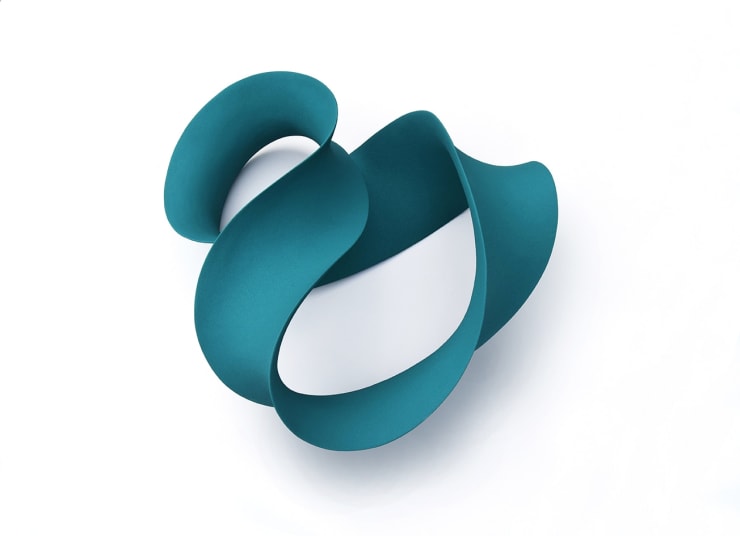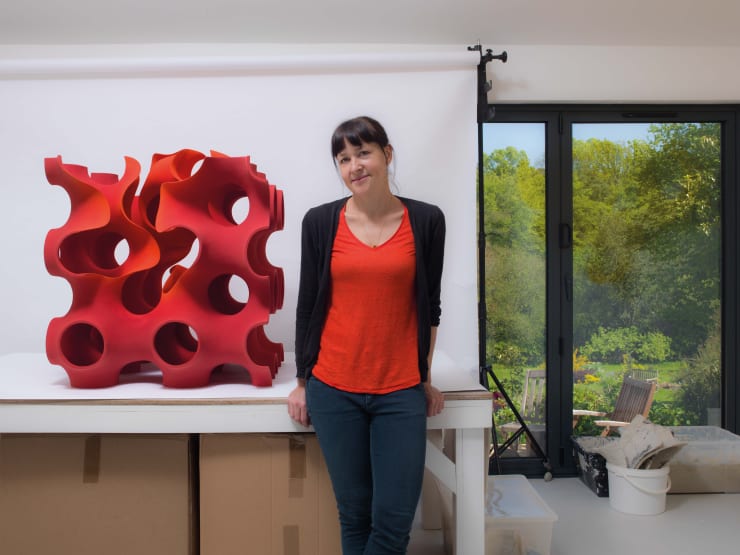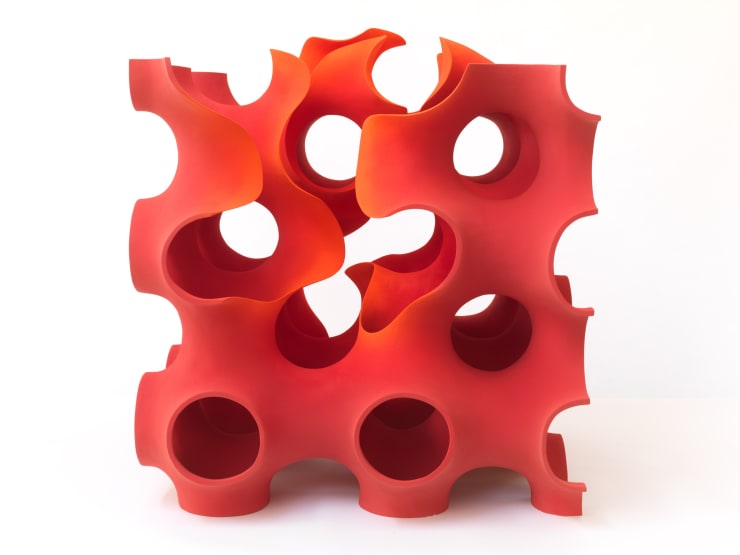-
Could you tell us about your process of making – perhaps, what tools you use to work with the clay and the pace at which you work.
I build my ceramic work in a heavily grogged stoneware clay, using the coil technique. I build the whole shape over a number of days because the clay needs to harden before continuing so as not to collapse. I also support the piece with foam and wood during the build. I often work on more than one form at the same time. When the whole form has been built, I let it dry to leather hard and then start to scrape back the surface with serrated kidney tools and grating tools, the kind usually used for wood and plaster. When the surface is even, I smooth it out using old credit cards and similar. This way the clay particles also get pressed together to form a firm surface. I then make clay supports that will be used in the following multiple firings.
Often, I can’t see a sculpture without supports until after the first firing, so it is always exciting to get the sculpture out of the kiln and move it around to see it from different angles. After the first firing (bisque),I sand the sculpture all over with sandpaper, then spray with coloured slip. If it is fired with supports, it is sprayed again if needed, sometimes multiple times
-
-
What is the starting point for your work? Are there, for example, preliminary drawings, or do the forms take shape in a process that is more instinctive?
I usually have quite a clear idea of the form before I start. I mainly sketch in clay, making small rough maquettes where I work out the form. I also draw a lot. Of course, the shape evolves in the making and sometimes it changes completely. There is usually a lot of planning involved, which I enjoy too. The larger and more complicated the piece, the more I need to figure out a way to turn them around to work on the surface underneath. I move them in and out of the kiln, mainly in their most fragile dry state.
-
-
At what point in the making process do you settle upon a colour for each sculpture? In this new body of work, the shade sometimes varies across the surface of a work. Could you also tell us a bit more about your decision to use colour in this way?
The point at which I decide the colour varies. Sometimes I know from the start, other times I change my mind a few times during the process. Most of the time the decision is made because it ‘feels right’, so it is very intuitive. Using more than one colour is a continuation of my exploration of what colour can do for the form, and my love for colours.
-
-
You have said that your finished forms should have ‘energy, enthusiasm, and a sense of purpose’. Does their purpose include to bring to mind specific forms or ideas? Could you tell us if there are any specific references which inspired this new body of work? For me, it brings to mind images of the sea and of botanical forms in the wind.
I am glad to hear you get these associations, but I don’t wish a sculpture to represent a specific idea. I look at shapes in nature; corals, bones, fungi, molluscs, parts of flowers and seedpods, as well as the movement of water and of wind.
I am lucky to live where I can be close to nature - it means a lot to me. I spend a lot of time thinking about the environment and how we humans should live with nature and share this planet with the wild world, instead of how we are treating it now. Though it is not a direct influence, I think my appreciation of the natural world plays an important part in my work.
-
-
Where do you find inspiration for your work? Mathematical structures seem to abound. Is, for example, the work of D’Arcy Wentworth Thompson, author of ‘On Growth and Form’, an influence?
D’Arcy Wentworth Thompson’s book certainly appeals to me. I have looked at models of mathematical three-dimensional surfaces for a long time. I couldn’t tell you much about mathematics, but these are really interesting and logical to me, as well as the mathematical forms found in nature: spirals, symmetry, repetition, fractals...The idea of a surface expanding and positive versus negative space are important in my recent work.
-
Introducing: Merete Rasmussen
Current viewing_room













